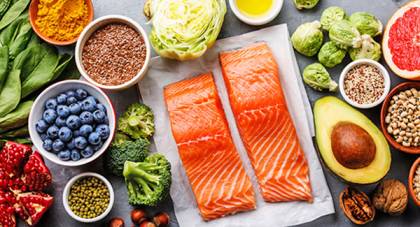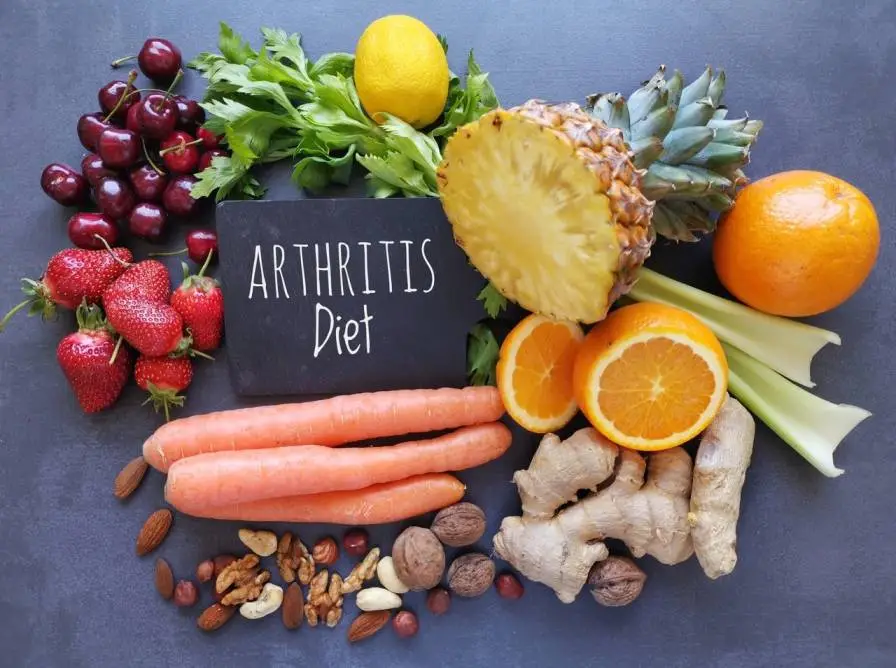In the United States, 32.5 million people suffer from arthritis, a prevalent chronic illness. An arthritic diet may help reduce the symptoms of the condition, but there is no known treatment. According to studies, a number of dietary components are important for managing arthritis as well as for causing the body to produce inflammatory markers that cause the condition to develop. As a result, altering your diet and understanding which foods to eat and which to avoid may help you manage joint pain and enhance your general health. The relationship between diet and arthritis, items to include and exclude from an arthritis diet, and other relevant topics are covered in this article. Look at it.
An Arthritis Diet: What Is It?
-
An arthritis diet is a way of eating that helps control the symptoms, lower the chance of developing arthritis, and strengthen joints. According to research, dietary interventions under medical supervision may be used as a supplemental treatment to assist better control arthritic symptoms.
-
Including foods high in anti-inflammatory qualities and vital minerals that promote joint function is the main goal of an arthritis diet. In those with arthritis and those at risk for acquiring it, it removes items that could worsen the body's inflammatory indicators and increase joint discomfort.
Advantages Of A Diet For Arthritis

1. Could Aid in Inflammation Reduction
- One of the main causes of joint discomfort associated with arthritis is chronic inflammation, which may be reduced by following an arthritis diet. Certain foods, such as garlic, ginger, and walnuts, may help lessen the rate of bone breakdown and reduce inflammation. However, more research is needed to demonstrate their efficacy.
2. Could Aid in the Relief of Symptomatic Pain
- After adopting dietary adjustments, people frequently report less discomfort associated with their arthritis, which improves their comfort and mobility. 24% of participants in a study including 217 rheumatoid arthritis patients stated that food had an impact on their symptoms, and 15% said that dietary adjustments had improved their symptoms. Researchers discovered that the items that helped them with their symptoms were spinach and blueberries.
3. Could Promote Joint Health
- Consuming foods high in antioxidants, vitamins, and minerals, such as spinach, walnuts, berries, and grapes, can improve joint health, stop cartilage deterioration, and possibly reduce the course of arthritis.
4. Could Aid with Weight Control
- A healthy weight may be maintained by following a well-balanced arthritic diet that excludes processed foods and includes lean meat, fruits, and vegetables. This could lessen joint stress and possibly lessen discomfort.
5. Could Enhance Life Quality
- People's quality of life is enhanced when they can participate in everyday activities and lead more active lifestyles due to improved joint function and mobility and decreased pain.
- An arthritic diet has a lot of potential health benefits, but how this diet affects your body is a mystery. To learn more, see the section below!
How Does a Diet for Arthritis Work?
In order for the arthritis diet to be effective, processed foods must be avoided.
-
Putting a focus on eating foods high in antioxidants and anti-inflammatory foods.
-
Foods that are known to cause inflammation, such as processed foods, sugary drinks, and foods high in saturated fats, including processed meat, should be avoided or consumed in moderation.
-
finding a balance between nutrients and lipids in order to lower inflammation and fight oxidative stress.
-
Eating a well-balanced diet is the main goal of the arthritis diet. Although there isn't a single diet that works for everyone, it's important to consult a registered dietitian to learn which foods make your symptoms better and which ones make them worse. To learn more about the lists of foods to eat and avoid if you have arthritis, continue scrolling.
Read Also: Mouthwatering Salads You Can't Resist
Avoiding Certain Foods If You Have Arthritis

Because they can worsen inflammation, joint pain, and other arthritis symptoms, some foods are best avoided when following an arthritis diet. The following foods should be avoided or limited when following an arthritis diet:
1. Processed Foods: Processed foods, such as fast food and sugary snacks, frequently include high levels of saturated and trans fats, which can lead to weight gain and inflammation. Additionally, drinking sugary beverages like soda can lead to joint pain and weight increase.
2. Red and Processed Meats: Meat contains a lot of saturated fats, which can aggravate arthritis symptoms and cause inflammation.
3. Highly Processed Grains: The high glycemic index of refined grains and their byproducts, such as cakes, biscuits, white bread, and wheat products, may exacerbate inflammation.
4. Alcohol: Excessive alcohol use has been linked to joint damage and an increased risk of arthritis in animals, according to research. More human research is necessary to support this assertion, though.
5. Salt: Diets high in salt can aggravate swelling in arthritic joints and cause inflammation.
Arthritis and the Mediterranean Diet
-
The Mediterranean diet is well known for its many health advantages and shows promise in the treatment of arthritis. It promotes eating fresh produce, whole grains, lean meats, poultry, legumes, fatty fish, and healthy fats like olive oil, which are rich in antioxidants and anti-inflammatory elements.
-
The Mediterranean diet is a natural ally for those looking to relieve joint pain and stiffness because studies indicate that it may help patients with rheumatoid arthritis reduce inflammation and boost physical function.
-
The Mediterranean diet lowers the risk of heart disease, diabetes, dyslipidemia, and neurodegenerative illnesses, among many other health advantages.
An Anti-Inflammatory Arthritis Diet
An useful dietary approach for arthritis management is the anti-inflammatory diet, which helps reduce inflammation, stiffness, and chronic pain. Nutrient-dense, antioxidant-rich fruits and vegetables, whole grains, and healthy fats like omega-3 fats (found in fatty fish), nuts, seeds, and olive oil are prioritized in this eating pattern, which may help reduce inflammation and ease the symptoms of arthritis.
On the other hand, it restricts or limits consumption of red meat, processed foods, sugary drinks, and saturated fats—all of which are thought to be pro-inflammatory and may worsen inflammation.
The Last Word
A revolutionary step in controlling joint pain, lowering inflammation, and improving general quality of life is adopting an arthritis-friendly diet. People with arthritis can take control of their health by adopting a diet high in antioxidants, anti-inflammatory foods, and other nutrients. Although there isn't a single diet that can treat arthritis, the correct nutritional strategy can greatly improve our quality of life and support medical therapies. Keep in mind that dietary decisions are personal, and the kind and severity of your arthritis may affect the diet you follow. For individualized advice, it is crucial to speak with a medical expert or certified dietician.







